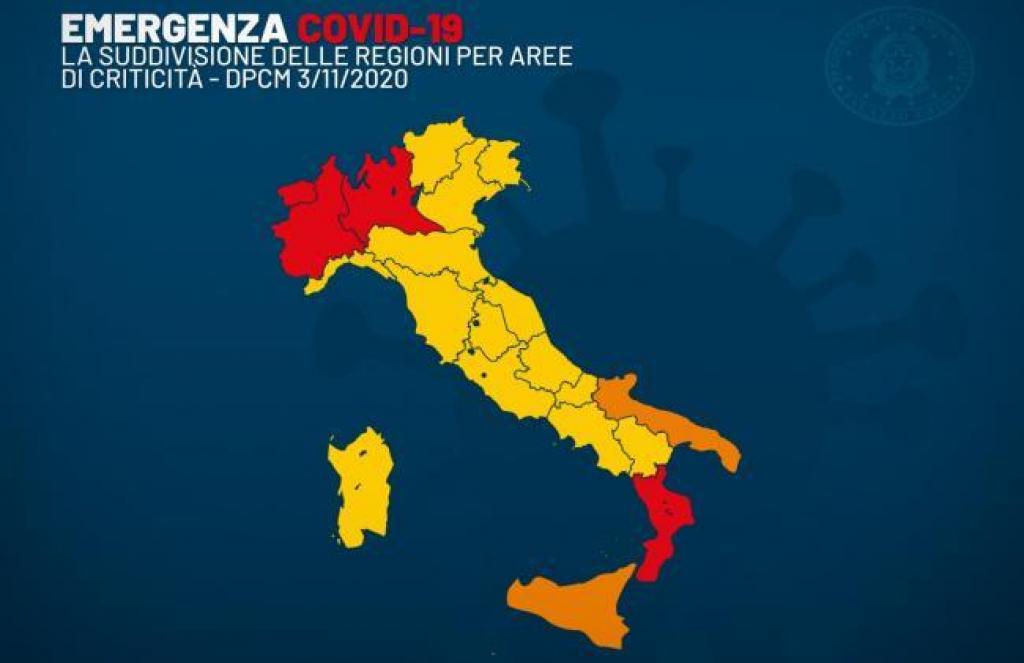Thessaloniki gets ready for its metro launch in November
The underground rapid transit lines have been under construction for almost two decades due to various project delays
 TheMayor.EU logo
TheMayor.EU logo 
Italy , Source: governo.it
Starting from tomorrow the country will be divided into 3 zones - red, orange and yellow
A government decree signed on the night of 4 November by Italian Prime Minister Conte has laid out new rules and regulations for dealing with COVID-19 valid both for the entire territory of the country as well as ones that will apply at a regional level. The new rules come into effect tomorrow, 6 November and will be in force until 3 December 2020. This new differentiated approach divides Italy into 3 separate regions, depending on contagion risk.
The most stringent rules are valid for the four red regions, where the virus circulates the most - Lombardy, Piedmont, Calabria, Valle D'Aosta. Less drastic ones are in force for the two in orange, where the risk is medium-high - Puglia and Sicily.
All the other Italian regions and the two autonomous provinces of Bolzano and Trento are considered yellow zones. There, the measures are mitigated, because the risk is moderate.
Red zone
Orange zone
Yellow zone

The underground rapid transit lines have been under construction for almost two decades due to various project delays

Now you can get your wine in Talence by paying directly in Bitcoin

That’s because the state has to spend money on updating the railway infrastructure rather than subsidizing the cost of the popular pass

Rethinking renewable energy sources for the urban landscape

The examples, compiled by Beyond Fossil Fuels, can inform and inspire communities and entrepreneurs that still feel trepidation at the prospect of energy transition

Now you can get your wine in Talence by paying directly in Bitcoin

The 10th European Conference on Sustainable Cities and Towns (ESCT) sets the stage for stronger cooperation between the EU, national and local level to fast track Europe's transition to climate neutrality.

At least, that’s the promise made by the mayor of Paris, Anne Hidalgo

The underground rapid transit lines have been under construction for almost two decades due to various project delays

At least, that’s the promise made by the mayor of Paris, Anne Hidalgo

Hostal de Pinós is located in the geographical centre of the autonomous region

Despite its church-y name, the district has long been known as the hangout spot for the artsy crowds

Urban dwellers across the EU are having a say in making their surroundings friendlier to people and the environment.

Forests in the EU can help green the European construction industry and bolster a continent-wide push for architectural improvements.

Apply by 10 November and do your part for the transformation of European public spaces

An interview with the Mayor of a Polish city that seeks to reinvent itself

An interview with the newly elected ICLEI President and Mayor of Malmö

A conversation with the Mayor of Lisbon about the spirit and dimensions of innovation present in the Portuguese capital














